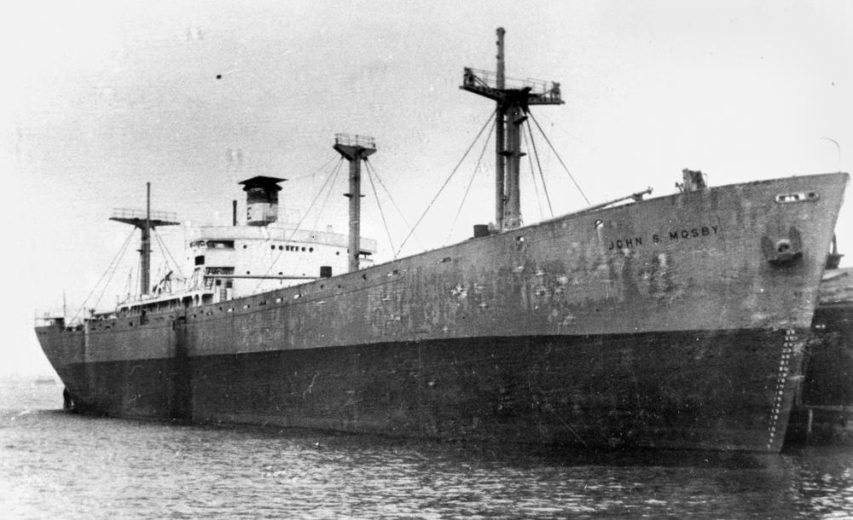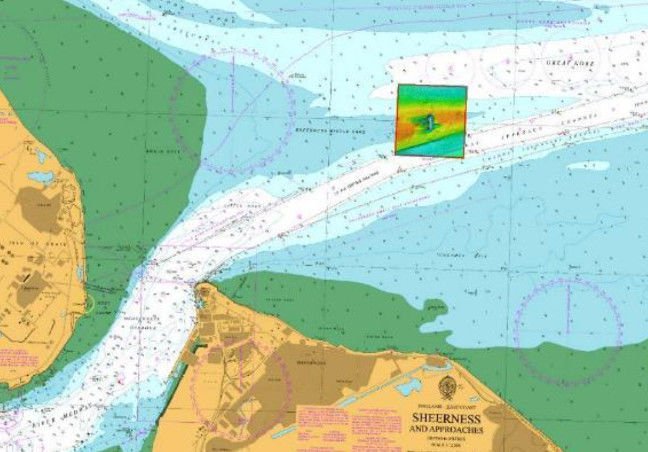The Great War
Published on 29 Jan 2018Ask your questions here: http://outofthetrenches.thegreatwar.tv
January 30, 2018
British Special Forces – Bulgarian-Ottoman Relations – Caporetto I OUT OF THE TRENCHES
Fitness tracker heat map shows dangerous activity near wrecked WW2 ammunition ship
The SS Richard Montgomery was a WW2 Liberty ship that ran aground near Sheerness in August 1944 carrying a cargo of bombs and other explosives. Part of the cargo was removed before the ship broke up and sank just offshore. There’s still quite a lot of TNT onboard the wreck, and it’s recently come to light that someone has been visiting the wreck, thanks to fitness tracker data:

The SS John S. Mosby, a Liberty ship similar to the SS Richard Montgomery
Photo from the John Oxley Library, State Library of Queensland, via Wikimedia.
The information came to light after social media users realised that the latest version of Strava’s heat map, which shows the aggregated routes of all of its users, could be used to figure out where Western military bases in the Middle East are. Fitness-conscious soldiers, running around the bases’ perimeters, built up visible traces on the heat map over time.
However, of much more concern is the revelation that people have been poking around the wreck of the SS Richard Montgomery, a Second World War cargo ship that was carrying thousands of tonnes of explosive munitions from America to the UK. The ship grounded in the Thames Estuary, in England, in August 1944, barely two miles north of Sheerness.
Extract from Admiralty chart of Sheerness (Crown copyright):
The multicoloured box is the location of the SS Richard Montgomery wreckAlthough wartime salvage parties managed to scavenge a large amount of ordnance from the grounded Liberty ship, her hull split in two and sank, taking around 1,400 tonnes of explosives down with her, before the job could be completed. Officials decided to leave the wreck in place.
According to a 1995 survey report [PDF] on the wreck: “The bombs thought to be on board are of two types. The bulk are standard, un-fused TNT bombs. In addition, some 800 fused cluster bombs are believed to remain. These bombs were loaded with TNT. They could be transported fused because the design included a propeller mechanism at the front which only screwed the fuse into position as the bombs fell from an aircraft. All the bombs could therefore be handled – with care – when the accident occurred.”
[…]
The 1995 report noted that TNT “does not react with water and will not explode if it is damp”, before adding that the brass-cased cluster bombs’ lead-based fuses “will combine with brass to produce a highly unstable copper compound which could explode with the slightest disturbance”. Although the compound “if formed, will wash away in a few weeks”, it was not made clear in the report how often the compound forms and creates the dangerous hair-trigger condition. Experts believe that the best way of keeping the wreck safe is not to disturb it, which led to a 500-metre exclusion zone being imposed around it.
I thought the ship’s name sounded familiar … I posted a video about the dangers of this wreck back in 2013. Last month, I posted a video about the Liberty ship program.
DicKtionary – A is for Air Force – Curtis LeMay
TimeGhost
Published on 17 Jan 2018A is for Air Force, you know that of course
And we turn to the states to look at the dates
When the man in command, that some couldn’t stand
Is our hero today, General Curtis LeMay.Join us on Patreon: https://www.patreon.com/TimeGhostHistory
Like TimeGhost on Facebook: https://www.facebook.com/TimeGhostHistory/
Written and Hosted by: Indy Neidell
Based on a concept by Astrid Deinhard and Indy Neidell
Produced by: Spartacus Olsson and Astrid Deinhard
Executive Producers: Bodo Rittenauer, Astrid Deinhard, Indy Neidell, Spartacus Olsson
Camera and Edit by: Spartacus Olsson
“Libertarian brutalists” … yet another name for the alt-right
At Catallaxy Files, Jeffrey Tucker identifies two very different kinds of libertarian:
Why should we favor human liberty over a social order ruled by power? In providing the answer, I would suggest that libertarians can generally be divided into two camps: humanitarians and brutalists.
The humanitarians are drawn to reasons such as the following. Liberty allows peaceful human cooperation. It inspires the creative service of others. It keeps violence at bay. It allows for capital formation and prosperity. It protects human rights of all against invasion. It allows human associations of all sorts to flourish on their own terms. It socializes people with rewards toward getting along rather than tearing each other apart, and leads to a world in which people are valued as ends in themselves rather than fodder in the central plan.
We know all of this from history and experience. These are all great reasons to love liberty.
But they are not the only reasons that people support liberty. There is a segment of the population of self-described libertarians — described here as brutalists — who find all the above rather boring, broad, and excessively humanitarian. To them, what’s impressive about liberty is that it allows people to assert their individual preferences, to form homogeneous tribes, to work out their biases in action, to ostracize people based on “politically incorrect” standards, to hate to their heart’s content so long as no violence is used as a means, to shout down people based on their demographics or political opinions, to be openly racist and sexist, to exclude and isolate and be generally malcontented with modernity, and to reject civil standards of values and etiquette in favor of antisocial norms.
These two impulses are radically different. The first values the social peace that emerges from freedom, while the second values the freedom to reject cooperation in favor of gut-level prejudice. The first wants to reduce the role of power and privilege in the world, while the second wants the freedom to assert power and privilege within the strict confines of private property rights and the freedom to disassociate.
To be sure, liberty does allow both the humanitarian and the brutalist perspective, as implausible as that might seem. Liberty is large and expansive and asserts no particular social end as the one and only way. Within the framework of liberty, there is the freedom to love and to hate. At the same time, they constitute very different ways of looking at the world — one liberal in the classical sense and one illiberal in every sense — and it is good to consider that before you, as a libertarian, find yourself allied with people who are missing the main point of the liberal idea.
In my experience, most of the people who espouse these “brutalist” notions are not people who have ever identified as libertarians.
The Three Teachings – Taoism, Buddhism, Confucianism l HISTORY OF CHINA
IT’S HISTORY
Published on 1 Aug 2015The Three Teachings Taoism, Buddhism and Confucianism have been a backbone of Chinese society and culture since the bronze age. The Three teachings are still intertwined strongly with today’s China. There are different interpretations to China’s chore faiths. Over time, different dynasties favoured different faiths, if only to define themselves against their predecessor. Ultimately though, its all about the philosophy of combining spirituality with every day life. All about the Three Teachings now on IT’S HISTORY.
QotD: Worstall’s Law of Organizations
I would, and do, argue that this is, in fact, the inevitable fate of all and any organizations, so much so that we might call it Worstall’s Law of Organizations, perhaps a minor corollary to Parkinson’s Laws. All and any organizations will in the end be run by those who stay awake in committee. A brief survey of the world around us will show that this is a simple and obvious truth.
Tim Worstall, “‘Any Organization Will, In the End, Be Run By Those Who Stay Awake in Committee'”, Ideas in Action, 2005-06-23.




